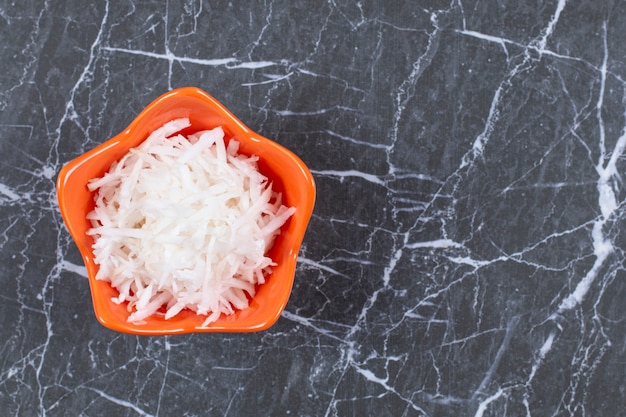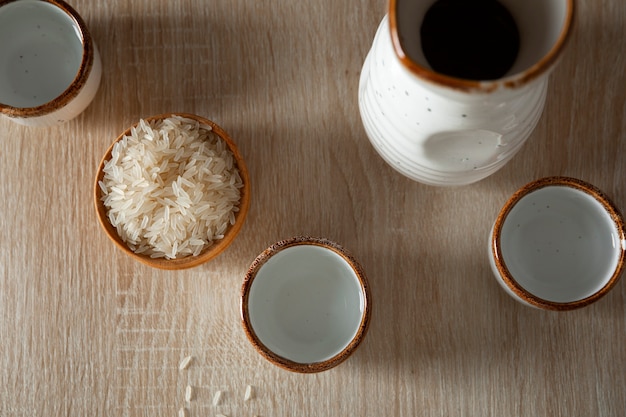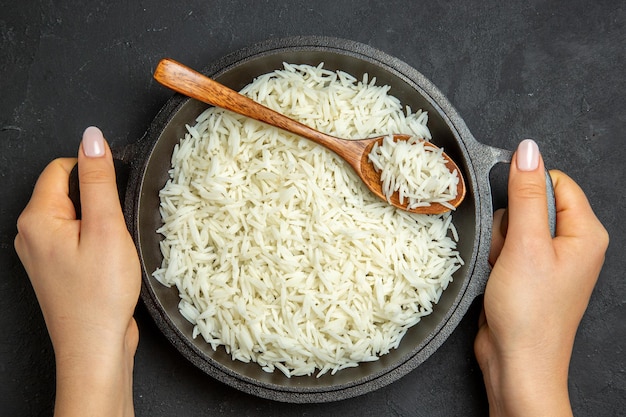Remember that time you tried making rice on the stovetop, and it ended up a sticky, clumpy mess? Or maybe you’ve always been intimidated by the whole process, convinced that perfect rice is reserved for professional chefs. Well, let me tell you, those days are over! With a trusty rice cooker and a few simple tricks, you can have fluffy, aromatic jasmine rice that’s worthy of any gourmet meal. So grab your measuring cup, your favorite recipe book, and let’s embark on a journey to rice cooker bliss together.
(Part 1) Choosing Your Rice Cooker: A Culinary Investment

Think of your rice cooker as a culinary investment – a little machine that will make your life so much easier and your rice so much tastier. And just like any good investment, you want to choose wisely. You don’t want to settle for just any old rice cooker, you want one that’s reliable, versatile, and fits your needs.
The Essentials for Rice Cooker Success
First things first, consider the features. A good rice cooker will usually have a few different settings for various types of rice, like white rice, brown rice, and even porridge. This is super handy because each type of rice needs a slightly different cooking time and water ratio. A keep-warm function is another must-have. It’s a lifesaver if you’re not eating right away, as it keeps the rice hot and fluffy for hours.
Exploring Beyond the Basics
Now, if you’re feeling adventurous, there are rice cookers out there that offer even more bells and whistles. Some have a steaming function, which lets you steam vegetables or fish alongside your rice. Others have pressure-cooking capabilities, allowing you to cook things faster and under pressure. And if you’re truly committed to the rice cooker lifestyle, there are even some models that can make bread! It all comes down to your budget, cooking style, and how much you’re willing to experiment.
Don’t Forget the Accessories!
Don’t forget the accessories! A rice paddle is essential for stirring the rice and making sure it cooks evenly. And a dedicated rice measuring cup is key because it’s not the same as a regular cup. Some rice cookers also come with a steaming basket, which is perfect for adding vegetables or meat to your meal. I’ve even seen some that come with little spoons for serving – the possibilities are endless!
(Part 2) Jasmine Rice: The Fragrant Star

Now that you’ve got your rice cooker, let’s talk about the star of the show – jasmine rice. This fragrant rice variety has a subtle, nutty flavor and a delightful aroma that transports you to a tropical paradise. But just like with rice cookers, not all jasmine rice is created equal.
The Secret to Perfect Jasmine Rice
For the best results, look for jasmine rice labelled “long grain” on the packaging. It’s typically fluffier and less sticky than other varieties. I always make sure to grab a bag that says “Aroma” or “Fragrant” as well – that’s what gives jasmine rice its unique character. And a word of advice: skip those pre-washed rice bags. You might think it saves time, but the extra washing step is worth it, I promise!
Washing and Soaking: Unlocking the Best Texture
Washing jasmine rice is a crucial step, even if you’re using pre-washed rice. Rinsing it helps remove excess starch, preventing it from getting too sticky. Simply place the rice in a fine-mesh strainer and rinse it under cold water until the water runs clear. I like to take it a step further and soak the rice for about 30 minutes after washing. This helps it cook more evenly and absorb more flavor.
(Part 3) Finding the Perfect Ratio: The Key to fluffy rice

Here’s where things get tricky for many people. They think they can just throw in a cup of rice and a cup of water and call it a day. But with jasmine rice, the perfect ratio is actually 1:1.25. That means for every cup of rice, you need 1 and a quarter cups of water. It might seem like a small difference, but trust me, it makes a world of difference!
Understanding the Science Behind the Ratio
Why the extra water? Jasmine rice is a bit of a water hog. It absorbs more water than other types of rice, ensuring that it cooks evenly and becomes light and fluffy. Don’t worry about your rice ending up soggy; the rice cooker will do its magic and evaporate the excess water.
Precision is Key: Measuring for Success
To get the perfect ratio, using a measuring cup that’s specifically designed for rice is your best bet. They’re usually marked with lines for different amounts of rice. You can also use a regular measuring cup, but make sure you’re using the right conversion. It’s worth taking the time to get this right – it’s the foundation for perfect rice!
(Part 4) A Pinch of Flavor: Adding Depth to Your Rice
Now, let’s add some subtle flavor to your rice without overpowering its delicate aroma. A few key ingredients can really elevate your rice game.
Salt: Enhancing the Natural Flavors
Adding a pinch of salt to the water is a classic trick for enhancing the natural flavors of the rice. Just a quarter teaspoon per cup of rice is all you need. It’s not about making the rice salty, it’s about adding a subtle depth that brings out the best in the rice’s flavor.
Sugar: A Subtle Sweetness
Now, this one is a bit controversial. Some people swear by never adding sugar to rice, while others believe it adds a touch of sweetness that enhances the overall taste. I fall into the latter camp. A tiny pinch of sugar, about a quarter teaspoon per cup of rice, can balance out the flavor and make the rice more aromatic. You can always experiment and see what you prefer!
Herbal Infusion: Adding a Touch of Exotic
If you’re looking to add a more complex and exotic flavor to your rice, try adding a few pandan leaves, lemongrass stalks, or a piece of ginger to the water. Let them infuse while the rice cooks, then remove them before serving. These herbs will impart a unique and delightful aroma to your rice, making it perfect for Asian-inspired dishes.
(Part 5) The Cooking Process: Patience and Simplicity
Now comes the easy part – letting the rice cooker do its thing! Pour your rinsed and measured rice into the pot, add your chosen water amount and flavorings, close the lid, and press start. Then, walk away! The rice cooker will take care of everything, leaving you free to relax or get on with other tasks.
Setting the Timer: Perfecting the Cooking Time
Most rice cookers have a built-in timer. Check the instructions for your particular model, but for jasmine rice, you’ll typically want to set the timer for about 20-25 minutes. The exact time might vary slightly depending on the amount of rice you’re cooking.
Resting the Rice: Unlocking the Fluff
Once the rice cooker signals that it’s done, don’t rush to open it right away. Give the rice a chance to rest for about 10-15 minutes. This allows the rice to finish steaming and become perfectly fluffy and separated. The waiting is a crucial part of the process, so resist the urge to peek inside before the time is up!
(Part 6) Fluffing Up Your Rice: The Finishing Touch
After your rice has had its rest, it’s time to give it a good fluff. This helps to separate the rice grains and create a light, airy texture. Use a rice paddle or a fork to gently lift and fluff the rice, separating the grains and ensuring a perfect fluffy texture.
The “Fork Test”: Checking for Perfection
Here’s a little trick I learned: use a fork to check the rice. If the fork comes out clean, without any grains clinging to it, then your rice is perfectly cooked. If there’s still some rice stuck to the fork, it needs a little more time to cook. Just let it sit in the rice cooker for a few more minutes and try the fork test again.
Serving Your Rice: Ready for Any Meal
Now, your perfectly cooked jasmine rice is ready to be served. Enjoy it on its own with a little drizzle of soy sauce or sesame oil, or use it as the base for a delicious stir-fry, curry, or rice bowl.
(Part 7) Storing and Reheating Leftovers: Keeping Your Rice Fresh
Got leftovers? No problem! You can easily store and reheat your jasmine rice to enjoy it later. Just transfer it to an airtight container and store it in the refrigerator for up to 3 days. When you’re ready to reheat it, simply microwave it for a minute or two, or heat it up on the stovetop with a little bit of water.
Tips for Reheating leftover rice
To prevent your rice from drying out when reheating, add a tablespoon or two of water to the container before microwaving. You can also add a little bit of butter or oil to make the rice more flavorful and moist.
(Part 8) Troubleshooting: Fixing Common Rice Cooker Mishaps
We all make mistakes, even with rice cookers. But don’t fret! Here are some common rice cooker mishaps and how to fix them.
sticky rice: When Things Get Too Clumpy
If your rice is too sticky, it’s probably because you didn’t rinse it well enough, or you used the wrong ratio of rice to water. Next time, make sure to rinse the rice thoroughly until the water runs clear, and use the correct 1:1.25 ratio. You can also try fluffing the rice more to separate the grains after cooking.
Dry Rice: When Your Rice Needs a Little Moisture
If your rice is too dry, it’s likely because you didn’t use enough water. Make sure to use the correct ratio of rice to water, and be careful not to overcook the rice. You can try adding a little bit of water to the rice and letting it steam for a few more minutes.
Overcooked Rice: When Things Get Mushy
If you overcook the rice, it will be mushy and lose its texture. To avoid this, make sure you’re using the right cooking time and don’t open the rice cooker too early. If you do overcook the rice, unfortunately, there’s not much you can do to salvage it.
(Part 9) Variations and Experimentation: Expanding Your Rice Horizons
Now that you’ve mastered the basic recipe, it’s time to get creative and experiment with different flavor combinations. The possibilities are endless!
Flavored Rice: Adding a Touch of Personal Style
Here are a few ideas to get you started:
- Lemon-Garlic Rice: Add a squeeze of lemon juice and a clove of garlic to the water for a refreshing and flavorful twist. It pairs perfectly with grilled chicken or fish.
- Spicy Rice: Add a pinch of chilli flakes or a chopped jalapeno pepper to the water for a spicy kick that’s perfect for Mexican-inspired dishes or a fiery side for your favorite curry.
- Savoury Rice: Add a tablespoon of soy sauce and a teaspoon of sesame oil to the water for a savory rice that goes well with Asian dishes.
- sweet rice: Add a teaspoon of sugar and a pinch of cinnamon to the water for a sweet rice that’s perfect for desserts or even as a base for a creamy rice pudding.
Steamed rice bowls: A Flavorful One-Dish Meal
You can also use your rice cooker to make delicious steamed rice bowls. Simply add your favorite ingredients to the steaming basket and cook them along with the rice.
- Chicken and Vegetable Rice Bowl: Add chicken, broccoli, carrots, and bell peppers to the steaming basket for a healthy and satisfying meal.
- Shrimp and Edamame Rice Bowl: Add shrimp, edamame beans, and corn to the steaming basket for a protein-packed and flavorful bowl.
- Salmon and Asparagus Rice Bowl: Add salmon fillets and asparagus spears to the steaming basket for a gourmet-style rice bowl that’s both elegant and delicious.
(Part 10) FAQs: Answering Your Rice Cooker Questions
Now, let’s address some of the most common questions about rice cookers and jasmine rice:
1. Can I use any type of rice in a rice cooker?
You can use any type of rice in a rice cooker, but some types of rice cook better than others. Jasmine rice is a good choice because it cooks quickly and evenly, resulting in a fluffy texture. Other good choices include basmati rice, sushi rice, and brown rice. Each type of rice might require different cooking times and water ratios, so be sure to check the instructions for your rice cooker.
2. Can I use a rice cooker to cook other things?
Yes! Many rice cookers have a steaming function, which means you can use them to steam vegetables, fish, or even dumplings. Some rice cookers also have a porridge function or a slow-cooker function, which opens up even more possibilities for using your rice cooker as a versatile kitchen tool.
3. How do I clean my rice cooker?
Cleaning a rice cooker is easy! Just wash the inner pot with soapy water and dry it thoroughly. You can also wipe down the outside of the rice cooker with a damp cloth. Don’t immerse the entire rice cooker in water, as this could damage the electrical components.
4. What if my rice cooker doesn’t have a “keep-warm” function?
If your rice cooker doesn’t have a “keep-warm” function, you can keep the rice warm by transferring it to a heat-proof container and placing it on a warm surface or in a low oven. Just be careful not to overheat the rice.
5. Is there a difference between "long grain" and "medium grain" rice?
Yes, there is! long grain rice is thinner and more slender than medium grain rice. This means it has a fluffier texture and tends to be less sticky. Medium grain rice is shorter and plumper, resulting in a chewier texture. For jasmine rice, you'll usually want to look for long grain varieties for that airy, fluffy texture.
I hope this guide has helped you unlock the secrets to perfect jasmine rice every time! So, go forth and conquer the world of rice cookers, my friends! And remember, the most important thing is to have fun and experiment. Who knows what delicious discoveries you might make along the way?
Everyone is watching

Corn on the Cob: The Ultimate Guide to Perfectly Cooked Ears
Healthy MealsAh, corn on the cob. Just the name evokes images of sunny days, barbecues, and that sweet, juicy flavour that ...

Perfect Pork Roast Oven Cooking Time: A Guide to Delicious Results
Healthy MealsThere's something truly satisfying about a perfectly roasted pork. The aroma alone is enough to make your mout...

Ham Cooking Time: How Long to Bake, Smoke, or Boil a Delicious Ham
Healthy MealsAh, ham. It's a classic, isn't it? A real crowd-pleaser, especially around holidays. And when done right, it'...

Scallops: The Ultimate Guide to Perfect Cooking
Healthy MealsAh, scallops. Those delicate, sweet, and utterly delicious morsels of the sea. They hold a special place in my...

Spaghetti Squash: The Ultimate Guide to Cooking and Serving
Healthy MealsRemember that time you saw spaghetti squash at the supermarket, looking all bumpy and strange, and thought, "W...
